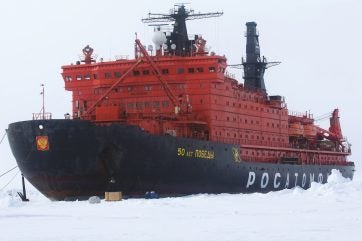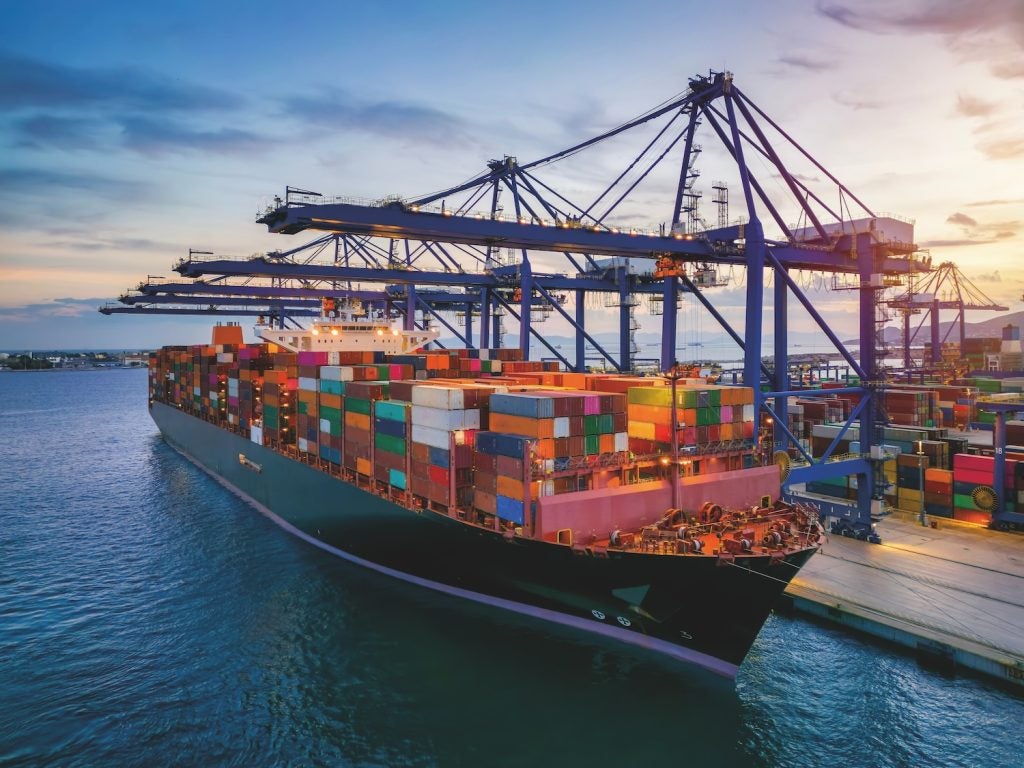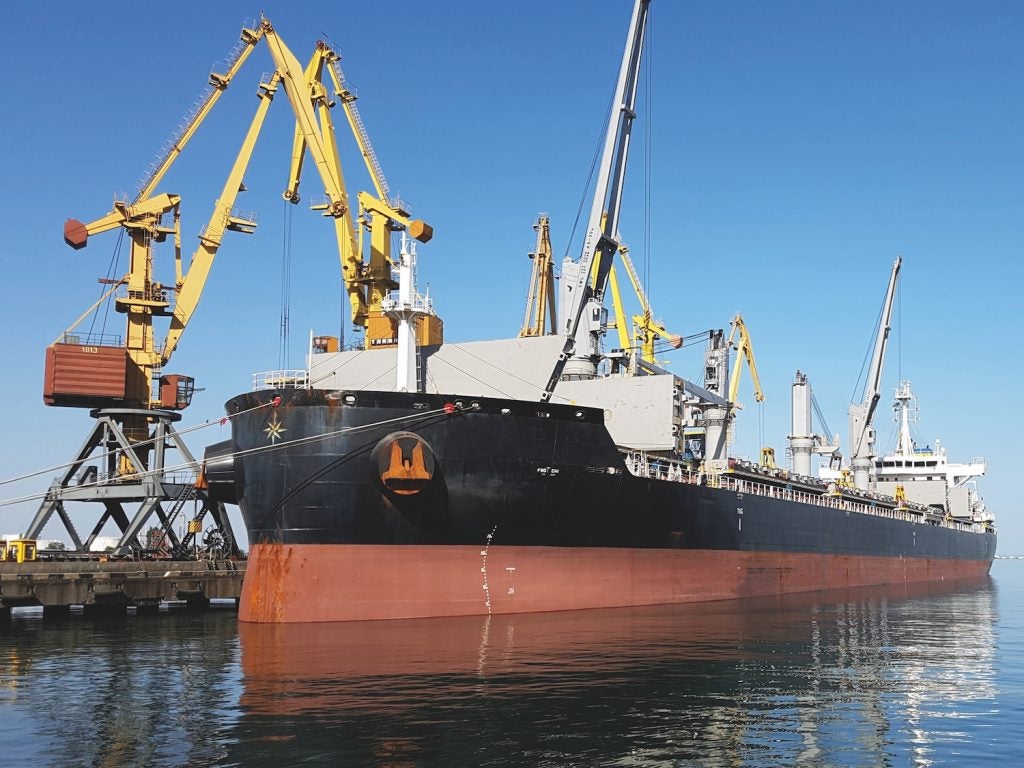
While nuclear propulsion has long been used for submarines, aircraft carriers and icebreakers in the Arctic Sea and a floating nuclear power plant provides power to a site in Russia, civilian marine deployments of nuclear technology have remained scarce. Now though, a new paper from maritime insurer Lloyd’s Register (LR) examines the implications of using nuclear for freight and other shipping with the insurer suggesting the outcome could be new operational and commercial models in the shipping industry. For example, nuclear ships would run for years, without requiring regular stops to access fuel or the need for bunkers to hold it. The cost structure and regulatory controls around operating nuclear reactors suggest new relationships between ship operators and reactor owners.
In its ‘Fuel for Thought: Nuclear’ paper, LR said the need to reduce emissions was driving interest in nuclear from shipping companies. Other decarbonisation options face uncertainty over fuel supply and infrastructure development in the form of fuel stores and transfer equipment in ports worldwide. For example one other option, ‘green methanol’, would be produced using hydrogen from electrolysis or from reforming natural gas with carbon capture and storage. But neither method has proceeded far into commercial deployment, let alone reaching the scale that would make it available at multiple ports.
LR said it is working across the industry on nuclear shipping projects and it expects interest will increase as shipping emissions regulations tighten. Development projects have already been initiated, which bring together shipping companies, shipyards and nuclear engineering companies on development of nuclear-propelled bulk carriers and containerships.

LR said, “interest in nuclear propulsion is split between those looking to have assets in the water in the shortest time frame using current technologies – around 2030 – and those working on a longer horizon for deployment of around 20 years who will have a wider range of technologies to consider.”
LR added, “The main considerations for shipowners exploring nuclear power for ships are consistent with other alternative fuels – delivery timelines and cost. An additional factor for nuclear power is social acceptance of the use of nuclear reactors on commercial ships.”
The technology readiness level (TRL) of nuclear is one area to be assessed. But LR adds two more: investment readiness level (IRL) evaluating commercial maturity, considering the financial proposition, industry, supply chain dynamics and market opportunities; and community readiness level (CRL), considering its acceptability and encompassing regulatory, sustainability and community acceptance.
Social licence
A social licence for nuclear powered shipping is a challenge, says LR, although it points out that two nuclear powered merchant ships have operated in the past. One, NS Savannah, was built by the US government and toured ports in the US and around the world to promote the peaceful use of nuclear power for 10 years between 1962 and 1972. The other, a German nuclear-powered research vessel called Otto Hahn, visited 33 ports in 22 countries during its 10 years of operation from 1969. Both were subject to restrictions or excluded from some ports.
A governance framework exists for nuclear ships, according to the paper. Chapter VIII of the International Convention for the Safety of Life at Sea (SOLAS) gives the basic requirements for ships provided with a nuclear power plant, encompassing design, construction, operation, maintenance, surveying, salvage and decommissioning of nuclear reactors on ships, including as a means of propulsion. A Code of Safety for Nuclear Merchant Ships added further guidance but a 1962 Brussels Convention on the Liability of Operators of Nuclear Ships has never entered into force. However, LR says that these documents are based on the reactor technologies and safety frameworks of the 1970s and “are in need of a thorough review”. It completed a gap analysis and says developing regulations for nuclear in shipping will require the close cooperation of the International Maritime Organization and the IAEA.
On shore, nuclear facilities are surrounded by Emergency Planning Zones (EPZs). The PWRs used in naval vessels can have large EPZs when in port, several kilometres wide, which are underwritten by their governments. Clearly this would represent a significant liability for vessel operators, and might extend to a number of ports as ships move from one to another. Nuclear ships are specifically not covered by The Convention on Limitation of Liability for Maritime Claims 1976 so liability falls to the operator. LR says the SMR model may help in determining a regime around this issue: “For risks to be underwritten on the commercial insurance market, the EPZ of a nuclear ship needs to be shrunk to the boundary of the vessel, a process which may be enabled by the safety characteristics of certain SMR technologies.”
It adds, “There is a broad expectation that safely reducing the EPZ to the vessel boundary is achievable for SMRs” and it cites a methodology validated by the US Nuclear Regulatory Commission for NuScale.
Refuelling
In conventional shipping, refuelling from fuel bunkers or recharging the batteries of electric vessels is the responsibility of the crew. Refuelling a nuclear reactor will be a specialist operation carried out by trained experts at a specialist facility and the cost profile and process is very different from conventional fuels. LR notes that fuelling a reactor will be high cost (especially compared with a single conventional refuelling) but once fuelled it will last for several years. LR says it will become cost competitive when compared to a ship’s total bunker expenses over long operational periods, but the business model will have to change. It suggests that ship owners and operators will not purchase nuclear fuel as an operational expense. It explains: “Instead, the maritime industry may lease a reactor and its operation and contract for energy output from onboard reactors. The fuel itself can be treated as
a capital expense from the outset. In this scenario, the relevant operational cost is the agreed price per Megawatt hour (MWh) of energy on the ship rather than the cost of refuelling the reactor.”
For port operators, nuclear vessels will require very little landside infrastructure, unlike existing port fuelling facilities which take the form of pipes, tanks, bunkering barges, cryogenic storage and other facilities. However some ports will probably specialise in providing maintenance services for nuclear vessels.
Comparing the cost
In considering the cost of a nuclear shipping fleet LR had to consider deployment models, as they affect capital expenditure (CAPEX) and operational expenditure (OPEX).
Onshore operating models suggest the reactor is likely to be owned and operated by a third party with a proven track record with nuclear regulators. LR says this has two benefits for the marine operator: they do not need to develop in-house nuclear capability and nuclear regulatory approach; and the nuclear asset owner is responsible for the CAPEX. If the reactors are operated as sealed units the operating and maintenance cost will be well known and ship owners can buy power on a megawatt hour contract.
The insurer also notes other nuclear operating characteristics that could affect ship operation, for example:
- Fuel price volatility is largely eliminated.
- Nuclear could allow ships to operate
- ‘very fast steaming’ at negligible cost increase, which would reduce the necessary fleet size. The lifetime of nuclear units could lead to vessels with a design life closer to 50 years than the current 20-30 years, but makes retrofits less likely.
LR also notes that at the end of its operational life at sea “reactor owners will be equipped to redeploy these valuable materials to other assets”.
Transformational technology
As regards the nuclear technology likely to be used in shipping, LR’s technology assessment says reactor types that use highly enriched uranium (HEU) are not suitable for commercial use. It notes the maturity of PWR designs like those currently in use in submarines, but it looks forward to the new generation of small modular or advanced nuclear reactors being developed for applications on land as well as at sea. It says SMRs “represent a leap forward in reactor design, emphasising safety, efficiency, and modularity for streamlined production.
Regulatory frameworks are evolving to accommodate the unique characteristics of SMRs and their application in maritime settings.”
But changing the shipping industry to one that is nuclear-fuelled will be a major transformation, rather than an incremental or even step change improvement, LR says.

“It will not be a direct replacement for oil-fired systems like some alternative fuels, but rather a primary catalyst to fundamentally reshape the shipping industry. Part of the transformation would be safer, more reliable, emissions free, longer-lived, and more productive ships. Another part of the transformation will be in the ship operator’s structure, including technical management, procurement, approach to quality, and an elevated safety culture.”
The general tone of LR’s report suggests that the transformation is possible, partly because the ability to operate for long periods without docking to take on fuel gives nuclear shipping operators more options. Whereas some decarbonisation options require a network of facilities within reasonable reach of each other, nuclear-powered shipping does not need global infrastructure; instead it could return to a single home port without the fear of running out of fuel. And where one leads, another may follow.






